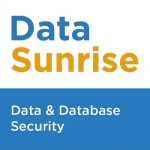Reporting is the most valuable aspect. It's very fast, even versus IBM. IBM could take three, or four days to get a report. In Imperva, everything is online, and you get the reports very fast.
It is very easy to configure the new dashboards, and reporting is easy to do. It takes maybe an hour to do it.
The solution is very stable.
We'd like better compliance with cyber security and legal as well as other areas.
I'd like to see some sort of solution for storage. For example, if someone in the company is doing some backup, I cannot reach that information in the discovery and in the protection. I only can protect the information, the databases that I use that are in developer or Q&A, and not those databases that are in the backups. It's a limitation.
I've been using the solution for three years.
This is a stable, reliable product. It never fails. There are no bugs or glitches.
There are six areas that are using the solution, and each area has maybe three or four users, at least. Risk, compliance, operations, and internal security, for example, are some areas that use it and get reports.
I'm not sure if we have plans to increase usage. I am covering all the databases right now. I have no other space to do it. Of course, if we are going to grow and use more databases, I'm going to use this solution. That said, right now, all the databases are covered.
We pay for the solution on a yearly basis. There are no additional costs or extra fees beyond the license itself.
Have compared the solution to IBM. Previously, I was an IBM customer, and IBM would take maybe a week to have a good configuration.
With Imperva, it's very easy to configure. It's very easy to get the reports. The reports are coming fast, and you are saving a lot of money if you send the logs to Splunk since Splunk charges per alert. In the Imperva solution, instead of sending tons of alerts, it is consolidating everything. It helps me save money with Splunk.
I am a consultant.
I have been working with the previous version of the product. Right now, the latest one is the Data Security Fabric.
It is very easy to use, and it helps us to discover the databases. In some cases, the shadow IP or the business areas are not reporting that they are using other databases. With the Imperva solution, I can find the other databases that are not reported to IT, and it's very easy to know where they are, where the information is, and what kind of information it is, if we are talking about the personal data or if we are talking about a financial data, et cetera. It's very easy to find the databases, and to know what kind of information is in each one of those databases. It's so helpful.
It helps a lot to have a consultant as they have the knowledge and experience a company can use. Even if a solution is very easy to implement, it helps to have the knowledge and experience of partners.
I'd rate the solution ten out of ten.











